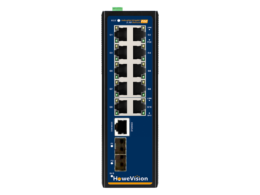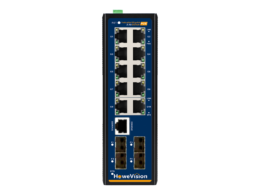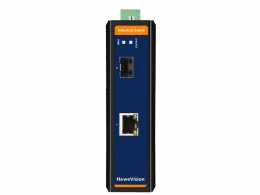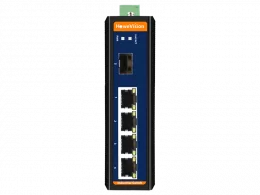Technology has finally had its way to dominate the world today. As technology evolves, so does the type and amount of components required for a functional telecommunication network. Any network switch requires a suitable and essential element to ensure seamless functioning. There are two types of switches: Normal switches and POE (Power over Ethernet) switches.
Firstly, I would like to give you some basic information about Network switches and POE (Power over Ethernet). If you can go through this article, I will resolve all inquiries about the POE switch. You will decide if or how a POE (Power over Ethernet) switch can be used as an ordinary switch at the end of this content.
Can a POE switch be used as a standard switch? I think this to be one of the most frequently asked questions concerning switches today. The most straightforward answer is that most normal switches are not PoE-enabled to supply power over Ethernet. On the other hand, a POE switch is a network switch with built-in Power over Ethernet injection. Connect other network tools to the switch as necessary, and the switch will automatically determine whether they are POE-compatible.
There are more crucial points to share about this interesting question. Let’s get started with all you need to know about POE (Power over Ethernet).
POE (Power over Ethernet)
In most cases, when a system is connected to a network, it requires two inputs: a network cable and a power wire. POE (Power over Ethernet) is the component that enables an Ethernet cable to transmit electrical power.
With a POE network, the power component produces equipment that sends and receives data and delivers power to network devices. Imagine a single POE (Power over Ethernet) cable does all these tasks.
There are various well-known methods for transmitting the cable of power over Ethernet. In 2003, the Institute of Electrical and Electronics Engineers (IEEE) recognized three of these techniques as IEEE 802.3 standards. These techniques include option A, option B, and 4PPoE. For 10BASE-T and 100BASE-T, two of the four signal pairs in a typical Cat 5 cable are well needed. Alternative B uses all pairs in regular Cat 5 cable and detaches the data and power conductor. It is good to note that the positive voltage passes through pins 4 and 5 while the negative passes through 7 and 8. It also makes device troubleshooting easier.
For 10 and 100Mbit/s Ethernet, alternative A carry power over the same connection as data. It is related to how the condenser mic is powered regularly through phantom power. A standard voltage is applied to each of the data cables to carry power. Because abnormal pair Ethernet makes use of different signals, this will not disturb data transmission. For Gigabit Ethernet and faster, a combination of alternatives A and B transfer power on cable pair and is also used for data because all four teams are used for data transmission at these rates.
4PPoE uses all four pairs of twisted-pair cables to provide power. It allows applications like cameras, Pan–Tilt–Zoom (PTZ) high-performance WAPs, and even charging laptop batteries to use more energy.
Wait! Let’s not shy away from the main discussion here. Having the needed knowledge about POE (Power over Ethernet), we should also chew over the POE switch.
POE Switch
A switch device enables systems on a network to communicate with one another. A POE switch’s operation depends on the use of power over Ethernet. You guess right; You can run a device using a network cable.
A PoE switch generates power that can control a variety of Ethernet-connected devices. If your network has distributed switches, you can also attain PoE pass-through switches. PoE powers these from a central source and provides power to endpoint devices like cameras and phones.
Furthermore, a network must contain either a POE (Power over Ethernet) switch or a standard switch and an extra device such as a POE injector or splitter for a machine to create a network connection.
Devices that use Power over Ethernet
You probably have a device you use with a regular switch, and you are wondering if a PoE switch could also work in handy with the same devices. I’ll make this probe simple for you by talking about various PoE-compatible devices.
POE (Power over Ethernet) is helpful for networks and systems requiring power and data transmission. The figure of the system controlled remotely and requiring data is growing as the corporation dominates the Internet of Things (IoT). In 2017, 8.4 million IoT devices were designed and deployed.
I’m sure POE (Power over Ethernet) technology will become even more important in most networking infrastructures as the number of network-connected machines multiplies.
The power over Ethernet (PoE) has a wide range of applications. To avoid wasting your time with a long list, I’ll go over the three most common implementation areas in detail.
VoIP Phones:
The majority of VoIP phones are PoE-enabled devices. The POE (Power over Ethernet) allows for a single connection to the wall socket and remote device powering down. It’s worth noting that POE can power everything from VoIP phones to LCD TVs and thin clients. The choice is yours to find out how much power your system requires, and I’m confident there’s a POE (Power over Ethernet) product out there that will fit your demands.
IP Cameras:
An IP camera is one of the most excellent gifts that technology has provided. Technology advances and one improvement is the usage of POE, which allows repositioning and fast delivery. POE will be responsible for connecting all of our houses, cars, and hotels with IoT technology in no time.
Wireless:
Most wireless access points are PoE-compatible. They allow remote positioning. Similarly, RFID readers are often compatible, which makes relocation easy. PoE (Power over Ethernet) connects other devices, i.e., IP phones, intelligent home automation, LED lighting, cooling systems, voice assistants, appliances, electric car charging stations, and heating.
The list below shows various devices that could work in hand with POE (Power over Ethernet) using their power ability as headlines.
PoE Switches vs. Normal Switches
Going back to our question, can POE switches use as standard switches? As you have learned above, regular switches only supply data through an Ethernet cable. The standard switches always need a separate power cable to operate the end device.
The fundamental differences between the regular switches and PoE switches relate to POE accessibility. A standard switch is not PoE compatible to dish out power over Ethernet. However, a standard switch can be used as a PoE switch, thanks to a PoE Splitter or PoE injector.
One hilarious truth is that a PoE switch cannot process simple data over Ethernet beyond a distance of 100 meters. A PoE Ethernet Extender, on the other hand, can extend the length up to 800 feet.
You can locate an appropriate switch HERE when you’re ready to buy one that will best serve your network. Make sure you research extensively about the drawbacks and advantages.
The exciting news is that regular devices and PoE devices can stir in the same network, but the fact is that a standard machine is not the right or best choice.
Given the general acceptance of IoT, all indications point to the new system being PoE-compatible. Unless your network device has a considerable distance, a notable legacy figure, or significant power demands, a PoE is a right way to go. It is wise to prepare your network to support this device to take advantage of new technology.









